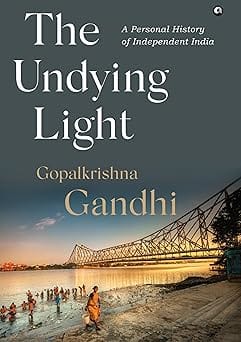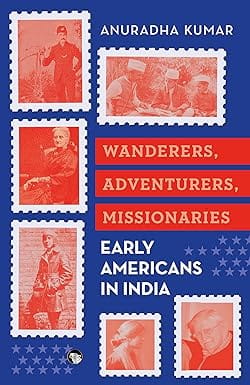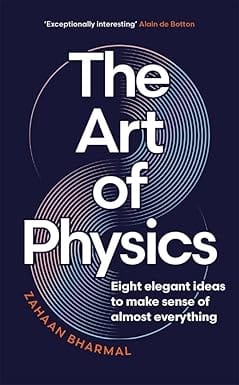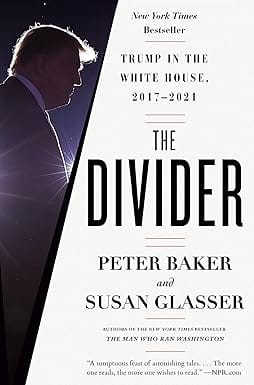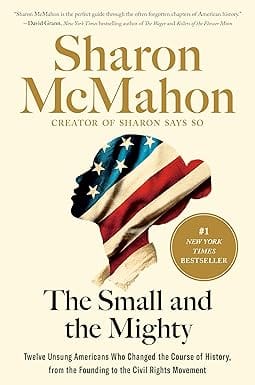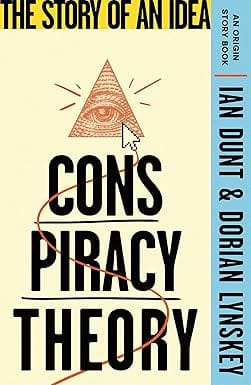WELCOME TO MIDLAND BOOK SHOP!
SHOP FOR
- Contemporary Fiction
- Contemporary Fiction
- Children
- Children
- Comics & Graphic Novels
- Comics & Graphic Novels
- Non-Fiction
- Non-Fiction
- Fiction
- Fiction
Shop No.20, Aurobindo Palace Market, Hauz Khas, Near Church +91 9818282497 | 011 26867121 110016 New Delhi IN
Midland The Book Shop ™
Shop No.20, Aurobindo Palace Market, Hauz Khas, Near Church +91 9818282497 | 011 26867121 New Delhi, IN
+919871604786 https://www.midlandbookshop.com/s/607fe93d7eafcac1f2c73ea4/677cda367903fd013d69b606/without-tag-line-480x480.png" [email protected]9789365238204 67ee825e32ec9a401372cf29 The Undying Light A Personal History Of Independent India https://www.midlandbookshop.com/s/607fe93d7eafcac1f2c73ea4/67ee825f32ec9a401372cf31/81b8k9sostl-_sy342_.jpg 9789365238204
This remarkable memoir, and history of India after Independence, by one of India’s most distinguished public intellectuals, begins with his memories, at the age of three, of the assassination of his paternal grandfather, Mahatma Gandhi. From this poignant opening note, the book expands into numerous encounters with personalities both Indian and foreign, ‘eminent’ as well as little known, and original insights into key events and turning points of modern Indian history, many of which he was an eyewitness to as secretary to presidents R. Venkataraman and K. R. Narayanan, and as governor of West Bengal and Bihar.
The book is divided into eight sections. The first section deals with the hopes and dreams of a newly independent nation, and the tragic events of Partition following the birth of the nation. Section Two recounts notable events that ushered in democracy such as the adoption of the Indian Constitution in 1950, the first general election (1951–52), and the formation of the Swatantra Party by C. Rajagopalachari, the last governor general of India and the author’s maternal grandfather. In Section Three, we witness, among other things, the 1962 Sino–India War that convulsed a young democracy, the deaths of India’s first president, Rajendra Prasad, in 1963, its first prime minister, Jawaharlal Nehru, in 1964, and second prime minister, Lal Bahadur Shastri, in 1966. Section Four starts out on a promising note as the author, now a young bureaucrat, begins his life and career as an assistant collector in South Arcot district before he leaves for Sri Lanka to work as First Secretary in India’s diplomatic mission there, in 1978. He witnesses the rise and transformation of Indira Gandhi as prime minister, the protest spearheaded by Jayaprakash Narayan, and details the grim events of the Emergency (1975–77) that took place soon after. The next section deals with the horrific events that shook the country during the 1980s—the Nellie Massacre (1983); Operation Bluestar and its devastating consequences—the assassination of Indira Gandhi (1984) and the pogrom against the Sikh community that followed; and the Bhagalpur riots (1989); there were also a few occasions that were worthy of celebration such as Rakesh Sharma becoming the first Indian cosmonaut to orbit the Earth in a spacecraft as part of the Russia–India joint space mission in 1984. Section Six begins with the exodus of Kashmiri Pandits from Kashmir in the early 1990s; the anti-Mandal protests by students all around the country, the assassination of Rajiv Gandhi by the LTTE (1991); the demolition of the Babri Masjid and the riots that ensued (1992); the outbreak of the bubonic plague in Surat (1994); Operation Shakti (1998); and ends with the beastly killings of Graham Stuart Staines and his two sons in 1999. In the penultimate section, the author, as secretary to President K. R. Narayanan, gives us a ringside view of dramatic events that took place at the start of a new millennium—the hijacking of IC 814 by the Harkat-ul-Mujahideen (2000); the visit of US President Bill Clinton to India (2000); the highly successful state visit of President Narayanan to China (2000); the devastating earthquake that shook Bhuj, Gujarat, in 2001, followed by the communal riots in Gujarat (2002); and the Nandigram violence (2007); in this sectio
The book is divided into eight sections. The first section deals with the hopes and dreams of a newly independent nation, and the tragic events of Partition following the birth of the nation. Section Two recounts notable events that ushered in democracy such as the adoption of the Indian Constitution in 1950, the first general election (1951–52), and the formation of the Swatantra Party by C. Rajagopalachari, the last governor general of India and the author’s maternal grandfather. In Section Three, we witness, among other things, the 1962 Sino–India War that convulsed a young democracy, the deaths of India’s first president, Rajendra Prasad, in 1963, its first prime minister, Jawaharlal Nehru, in 1964, and second prime minister, Lal Bahadur Shastri, in 1966. Section Four starts out on a promising note as the author, now a young bureaucrat, begins his life and career as an assistant collector in South Arcot district before he leaves for Sri Lanka to work as First Secretary in India’s diplomatic mission there, in 1978. He witnesses the rise and transformation of Indira Gandhi as prime minister, the protest spearheaded by Jayaprakash Narayan, and details the grim events of the Emergency (1975–77) that took place soon after. The next section deals with the horrific events that shook the country during the 1980s—the Nellie Massacre (1983); Operation Bluestar and its devastating consequences—the assassination of Indira Gandhi (1984) and the pogrom against the Sikh community that followed; and the Bhagalpur riots (1989); there were also a few occasions that were worthy of celebration such as Rakesh Sharma becoming the first Indian cosmonaut to orbit the Earth in a spacecraft as part of the Russia–India joint space mission in 1984. Section Six begins with the exodus of Kashmiri Pandits from Kashmir in the early 1990s; the anti-Mandal protests by students all around the country, the assassination of Rajiv Gandhi by the LTTE (1991); the demolition of the Babri Masjid and the riots that ensued (1992); the outbreak of the bubonic plague in Surat (1994); Operation Shakti (1998); and ends with the beastly killings of Graham Stuart Staines and his two sons in 1999. In the penultimate section, the author, as secretary to President K. R. Narayanan, gives us a ringside view of dramatic events that took place at the start of a new millennium—the hijacking of IC 814 by the Harkat-ul-Mujahideen (2000); the visit of US President Bill Clinton to India (2000); the highly successful state visit of President Narayanan to China (2000); the devastating earthquake that shook Bhuj, Gujarat, in 2001, followed by the communal riots in Gujarat (2002); and the Nandigram violence (2007); in this sectio
in stockINR 799
1 1
Email ID already exists!
Your Current password is incorrect
Password Updated Successfully
Thanks for your Feedback
The Undying Light A Personal History Of Independent India
ISBN: 9789365238204
₹799
₹999 (20% OFF)SIZE GUIDE
Sold By: Hauz Khas - Aurobindo Market
Details
- ISBN: 9789365238204
- Author: Gopalkrishna Gandhi
- Publisher: Aleph Book Company
- Pages: 624
- Format: Hardback
Book Description
This remarkable memoir, and history of India after Independence, by one of India’s most distinguished public intellectuals, begins with his memories, at the age of three, of the assassination of his paternal grandfather, Mahatma Gandhi. From this poignant opening note, the book expands into numerous encounters with personalities both Indian and foreign, ‘eminent’ as well as little known, and original insights into key events and turning points of modern Indian history, many of which he was an eyewitness to as secretary to presidents R. Venkataraman and K. R. Narayanan, and as governor of West Bengal and Bihar.
The book is divided into eight sections. The first section deals with the hopes and dreams of a newly independent nation, and the tragic events of Partition following the birth of the nation. Section Two recounts notable events that ushered in democracy such as the adoption of the Indian Constitution in 1950, the first general election (1951–52), and the formation of the Swatantra Party by C. Rajagopalachari, the last governor general of India and the author’s maternal grandfather. In Section Three, we witness, among other things, the 1962 Sino–India War that convulsed a young democracy, the deaths of India’s first president, Rajendra Prasad, in 1963, its first prime minister, Jawaharlal Nehru, in 1964, and second prime minister, Lal Bahadur Shastri, in 1966. Section Four starts out on a promising note as the author, now a young bureaucrat, begins his life and career as an assistant collector in South Arcot district before he leaves for Sri Lanka to work as First Secretary in India’s diplomatic mission there, in 1978. He witnesses the rise and transformation of Indira Gandhi as prime minister, the protest spearheaded by Jayaprakash Narayan, and details the grim events of the Emergency (1975–77) that took place soon after. The next section deals with the horrific events that shook the country during the 1980s—the Nellie Massacre (1983); Operation Bluestar and its devastating consequences—the assassination of Indira Gandhi (1984) and the pogrom against the Sikh community that followed; and the Bhagalpur riots (1989); there were also a few occasions that were worthy of celebration such as Rakesh Sharma becoming the first Indian cosmonaut to orbit the Earth in a spacecraft as part of the Russia–India joint space mission in 1984. Section Six begins with the exodus of Kashmiri Pandits from Kashmir in the early 1990s; the anti-Mandal protests by students all around the country, the assassination of Rajiv Gandhi by the LTTE (1991); the demolition of the Babri Masjid and the riots that ensued (1992); the outbreak of the bubonic plague in Surat (1994); Operation Shakti (1998); and ends with the beastly killings of Graham Stuart Staines and his two sons in 1999. In the penultimate section, the author, as secretary to President K. R. Narayanan, gives us a ringside view of dramatic events that took place at the start of a new millennium—the hijacking of IC 814 by the Harkat-ul-Mujahideen (2000); the visit of US President Bill Clinton to India (2000); the highly successful state visit of President Narayanan to China (2000); the devastating earthquake that shook Bhuj, Gujarat, in 2001, followed by the communal riots in Gujarat (2002); and the Nandigram violence (2007); in this sectio
The book is divided into eight sections. The first section deals with the hopes and dreams of a newly independent nation, and the tragic events of Partition following the birth of the nation. Section Two recounts notable events that ushered in democracy such as the adoption of the Indian Constitution in 1950, the first general election (1951–52), and the formation of the Swatantra Party by C. Rajagopalachari, the last governor general of India and the author’s maternal grandfather. In Section Three, we witness, among other things, the 1962 Sino–India War that convulsed a young democracy, the deaths of India’s first president, Rajendra Prasad, in 1963, its first prime minister, Jawaharlal Nehru, in 1964, and second prime minister, Lal Bahadur Shastri, in 1966. Section Four starts out on a promising note as the author, now a young bureaucrat, begins his life and career as an assistant collector in South Arcot district before he leaves for Sri Lanka to work as First Secretary in India’s diplomatic mission there, in 1978. He witnesses the rise and transformation of Indira Gandhi as prime minister, the protest spearheaded by Jayaprakash Narayan, and details the grim events of the Emergency (1975–77) that took place soon after. The next section deals with the horrific events that shook the country during the 1980s—the Nellie Massacre (1983); Operation Bluestar and its devastating consequences—the assassination of Indira Gandhi (1984) and the pogrom against the Sikh community that followed; and the Bhagalpur riots (1989); there were also a few occasions that were worthy of celebration such as Rakesh Sharma becoming the first Indian cosmonaut to orbit the Earth in a spacecraft as part of the Russia–India joint space mission in 1984. Section Six begins with the exodus of Kashmiri Pandits from Kashmir in the early 1990s; the anti-Mandal protests by students all around the country, the assassination of Rajiv Gandhi by the LTTE (1991); the demolition of the Babri Masjid and the riots that ensued (1992); the outbreak of the bubonic plague in Surat (1994); Operation Shakti (1998); and ends with the beastly killings of Graham Stuart Staines and his two sons in 1999. In the penultimate section, the author, as secretary to President K. R. Narayanan, gives us a ringside view of dramatic events that took place at the start of a new millennium—the hijacking of IC 814 by the Harkat-ul-Mujahideen (2000); the visit of US President Bill Clinton to India (2000); the highly successful state visit of President Narayanan to China (2000); the devastating earthquake that shook Bhuj, Gujarat, in 2001, followed by the communal riots in Gujarat (2002); and the Nandigram violence (2007); in this sectio
User reviews
NEWSLETTER
Subscribe to get Email Updates!
Thanks for subscribing.
Your response has been recorded.

India's Iconic & Independent Book Store offering a vast selection of books across a variety of genres Since 1978.
"We Believe In The Power of Books" Our mission is to make books accessible to everyone, and to cultivate a culture of reading and learning. We strive to provide a wide range of books, from classic literature, sci-fi and fantasy, to graphic novels, biographies and self-help books, so that everyone can find something to read.
Whether you’re looking for your next great read, a gift for someone special, or just browsing, Midland is here to make your book-buying experience easy and enjoyable.
We are shipping pan India and across the world.
For Bulk Order / Corporate Gifting
 +91 9818282497 |
+91 9818282497 |  [email protected]
[email protected]
Click To Know More
INFORMATION
QUICK LINKS
ADDRESS
Midland Book Shop - Hauz Khas
Shop No.20, Aurobindo Palace Market, Near Church, New Delhi
Shop No.20, Aurobindo Palace Market, Near Church, New Delhi

